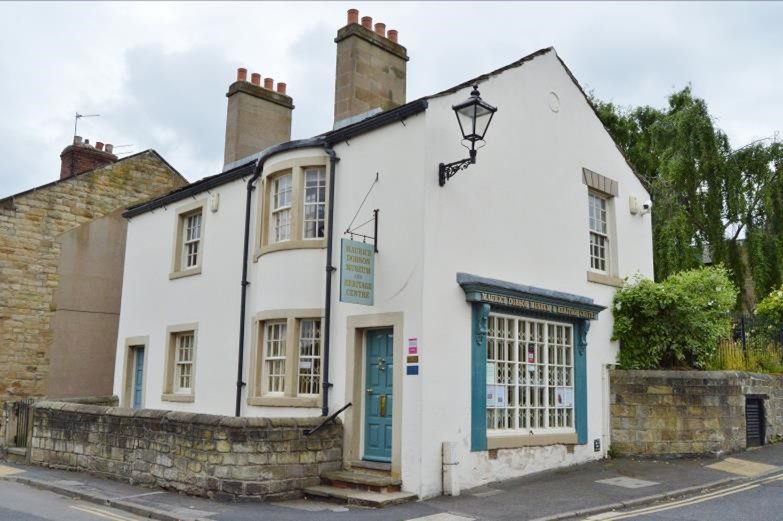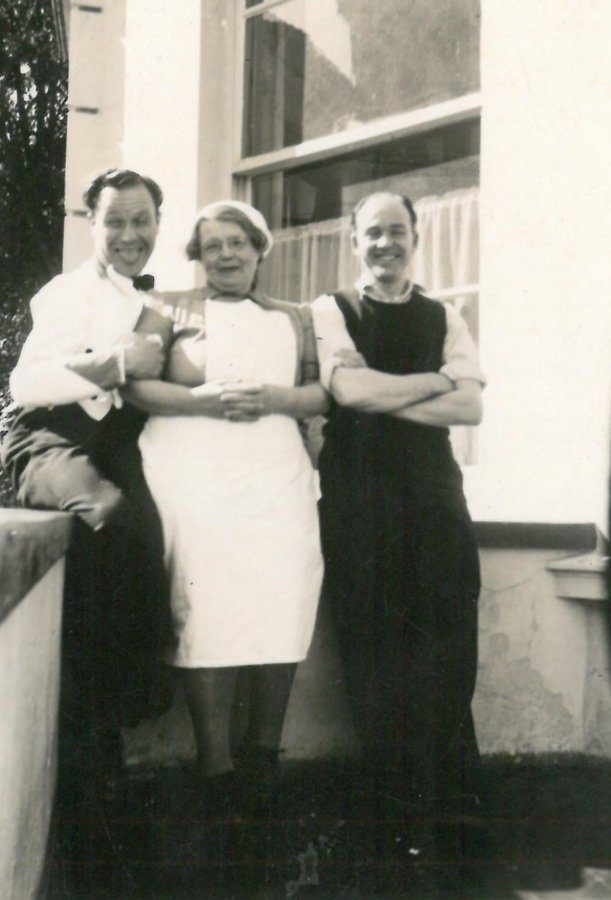Museums are more than just gigantic display cabinets where forgotten objects go to be gawped at. The humble museum has the power to reflect and shape our society, providing priceless lessons about the past.
Darfield’s Maurice Dobson Museum and Heritage Centre is the epitome of that, giving visitors a lesson on the importance of celebrating a diverse community and its collective heritage.
Housed in an old Yeoman’s house in Darfield’s conservation area, the museum is overflowing with an eclectic collection of historical treasures featuring everything but the kitchen sink – although there could possibly be one tucked away within the displays.

From industrial heritage to domestic memorabilia, the museum offers a comprehensive and immersive insight of Darfield and its ground-breaking history.
This local abode and much of its contents once belonged to an openly gay ex-military couple, Maurice Dobson and Fred Halliday, who were widely accepted by the pit village despite homosexuality being illegal at the time.
Maurice was the youngest of eight children, born in Wombwell in 1912. He left school at 15 and spent a short time working at Mitchell Main Colliery before joining the army in 1929 aged 17. He enlisted with the Gordon Highlanders before transferring to the York and Lancaster regiment and then the Durham Light Infantry during WWII.
It was in the army that Maurice met Fred, from Pudsey, West Yorkshire. After the war ended, Maurice and Fred spent a decade working in hotels along the coast, finally moving back to Barnsley in the mid-1950s. Maurice bought the off-licence on Vicar Street in Darfield in 1956 which he and Fred ran as a typical corner shop selling wines, beers, sweets and a small selection of convenience goods.
The couple lived together upstairs, enjoying a flamboyant and extravagant lifestyle with a penchant for antiques they’d purchase from auctions in Beverley.

Towards the end of his life, Maurice made it clear that his house and possessions would remain in the village for others to benefit, perhaps as a thank you to the community for being so tolerant of him. Fred died in 1988, and Maurice passed two years later, leaving his estate to Barnsley Council.
The property was put into a trust managed by trustees of the Darfield Amenity Society with a view to transform it into a heritage centre. Thanks to a Heritage Lottery Funding grant of £164,000, the Maurice Dobson Museum and Heritage Centre opened to the public in 2000.
Today, the museum is still run entirely by volunteers, one of the few museums of its kind in the UK where nobody takes a penny. They open twice a week – on a Wednesday afternoon and all day Saturday – and visitors pay a nominal fee of £2 (50p for children) to enter the upstairs rooms which goes towards the running of the museum.
There is a small café which leads out to a courtyard area and sells cakes and scones homemade by the volunteers, including the eponymous Darfield cake made with ingredients starting with every letter of Darfield. The café couples up a as a gallery which showcases work by local artists; throughout October it will be the work of Rotherham Society of Arts and Crafts. The on-site gift shop to the front of the museum supports local makers selling handmade cards, crafts, postcards and small children’s toys.

Volunteer tour guide, Ken Brooks, tells us people who step through the door can’t believe what they’re greeted with. He shows us around, sharing some of the fascinating local history as well as his personal memories of Maurice and Fred which only add to the magic of this unassuming museum.
Much of Maurice’s antiques and possessions are displayed downstairs, including a Jacobean chair from the 1600s. “Maurice cut one of the legs down because the floor was so uneven, which tells you that he only bought what he liked as nobody would ever cut down a Jacobean chair,” Ken says.
There are also three cricket stools from 1750 which Ken says are irreplaceable despite their primitive appearance. These handcrafted milking stools still have the original wedges where the legs have been locked into place through the seat top.
The majority of the museum’s collection has been donated by people from or with a connection to Darfield, helping piece together life in the village through the ages.
In centuries past, the village led the way in innovation and the entire community flourished on the back of the many industries that called Darfield home.
The Canon Sorby Room, named after the village rector responsible for initiating the High Court’s Darfield Judgement ruling that children can be withdrawn from education on Ascension Day, is filled with industrial implements and artefacts from the brickworks, glassworks, agriculture, military, and nursing.

Collieries were a main employer in Darfield and the surrounding areas and the museum has a vast mining collection featuring remnants from the pits including a snap tin box, a Dudley water carrier, gas lamps and hard hats. The title of oldest piece in the collection belongs to a rag and chain pump from 1520, a splendid example of the first pump used to extract water from the pit bottom, which was found when they closed Houghton Main.
Other industries locally were the Mitre football factory where the mainly female workforce made footballs by hand on piecework contracts – seven balls a day being the goal to earn a living.
There was also the Green Monk Products toy factory that exported products around the world including its best seller, the metal kaleidoscope – one of which is on display at V&A Dundee. Darfield Museum has a whole cabinet dedicated to the toys invented by Arthur Greenwood.
A smaller display tells the story of the Taylor family of Middlewood Hall. They owned a linen mill that employed hundreds of workers and were also great benefactors to the village. During the First World War, they allowed Middlewood to be turned into a convalescent hospital.
The Darfield Museum collection also pays homage to domestic life mixing obscure objects with more memorable items you’d find around the home. Ken gets us to guess what a few things would have been used for, from a snooker cue tipper to a railway worker’s button cleaner. A two-maid cleaner from 1910 and a 1940s Swan toaster are much more recognisable.
But we’ll hold off on the rest so not to give too much of its hypnotic charm away. Only by visiting can you truly appreciate just how special a place Darfield Museum is.

Maurice Dobson Museum and Heritage Centre is open Wednesday 1pm-4pm and Saturday 10am-4pm. Entry is £2 for adults and 50p for children. Find out more on their website www.darfieldmuseum.co.uk






